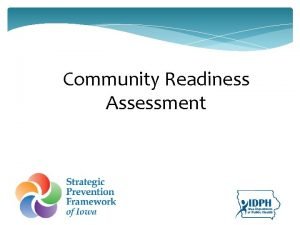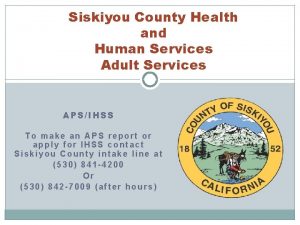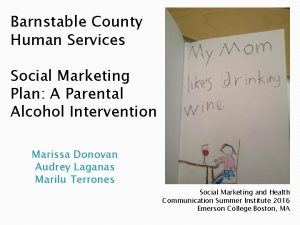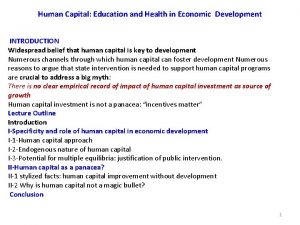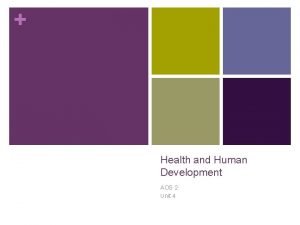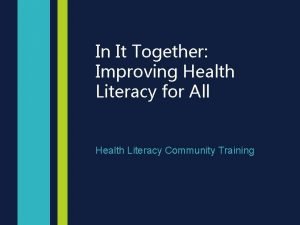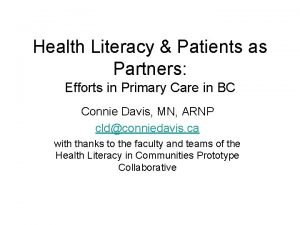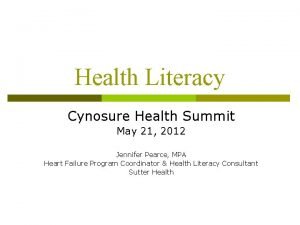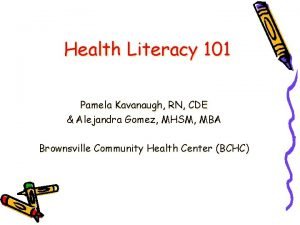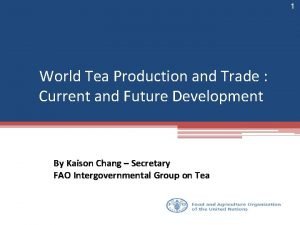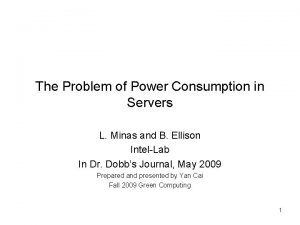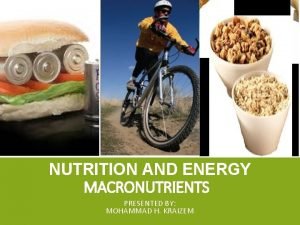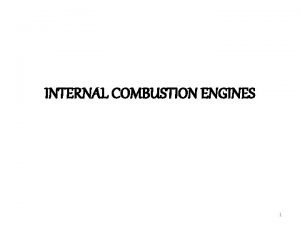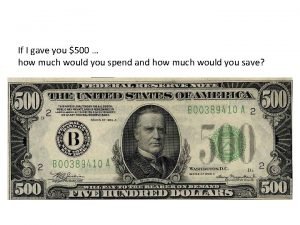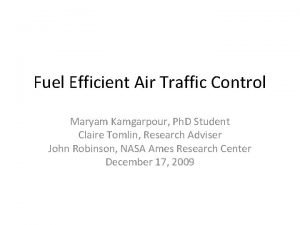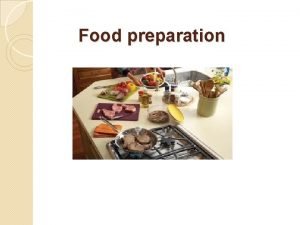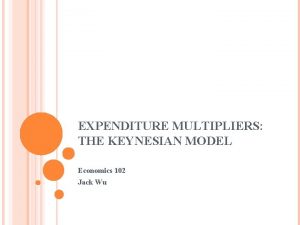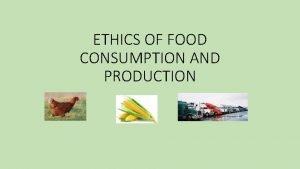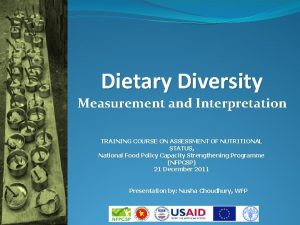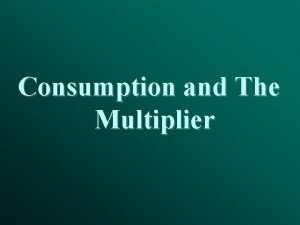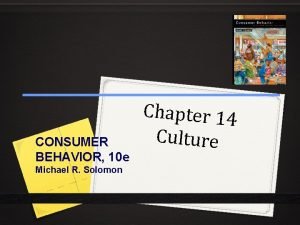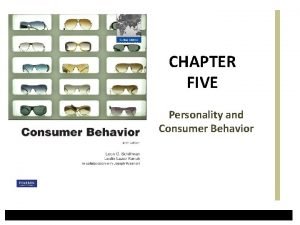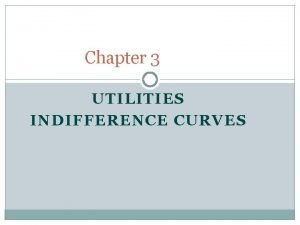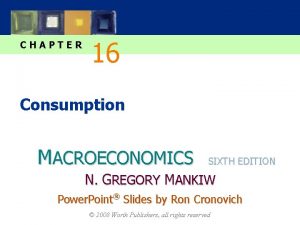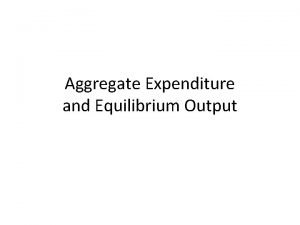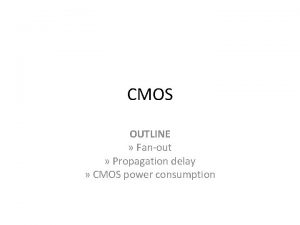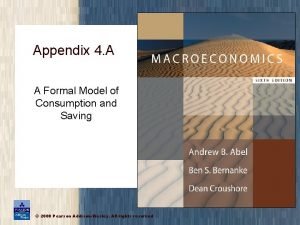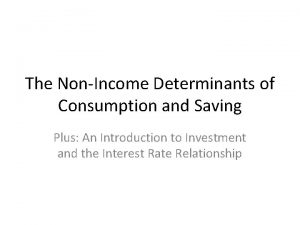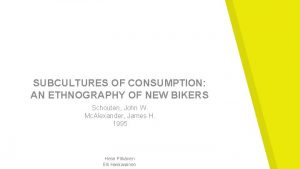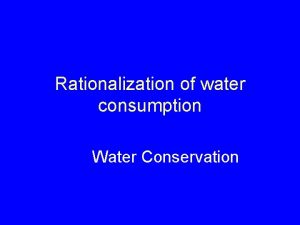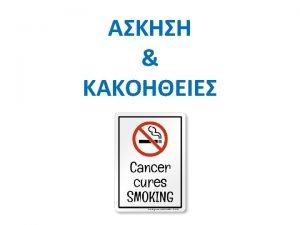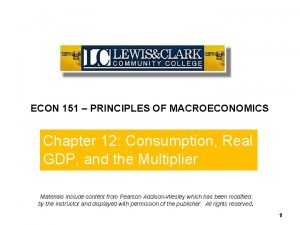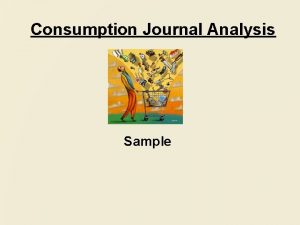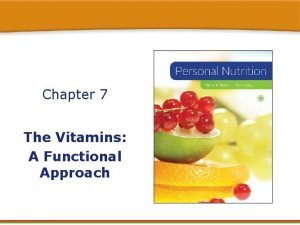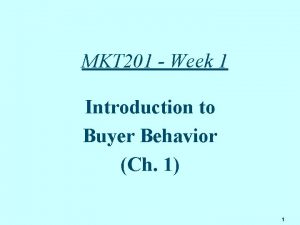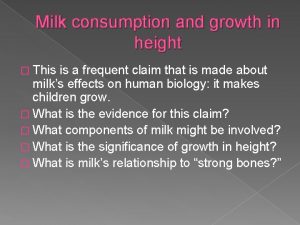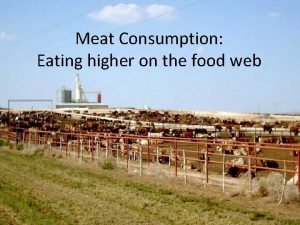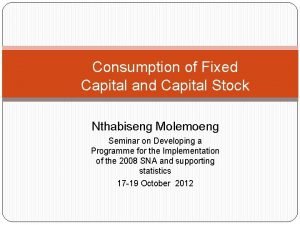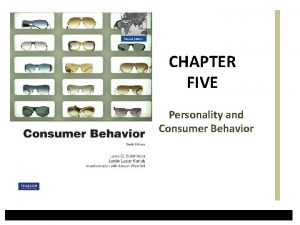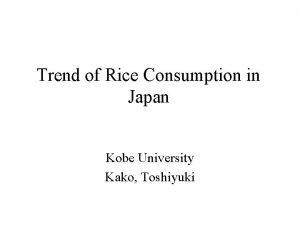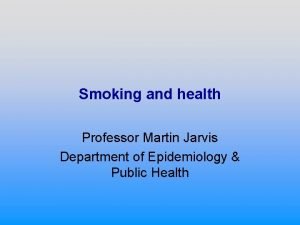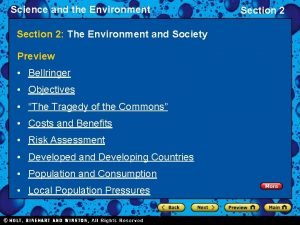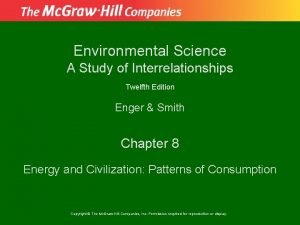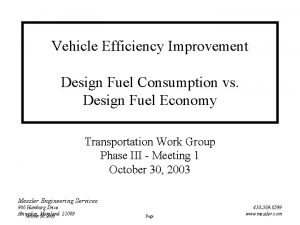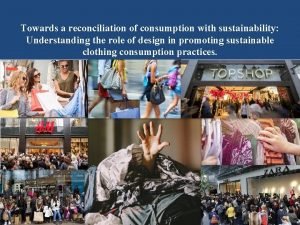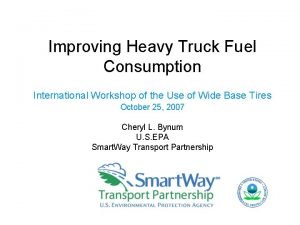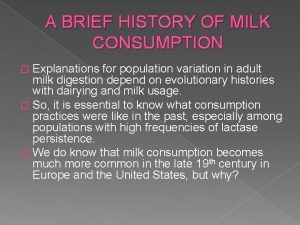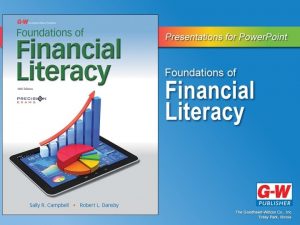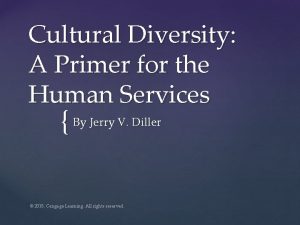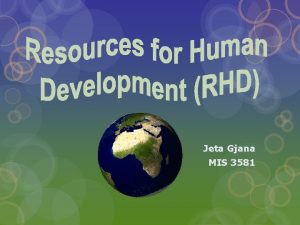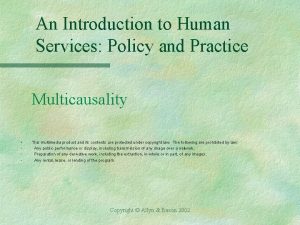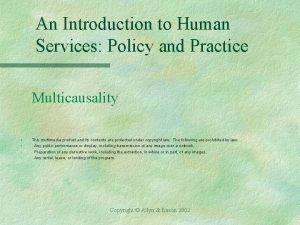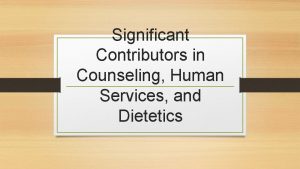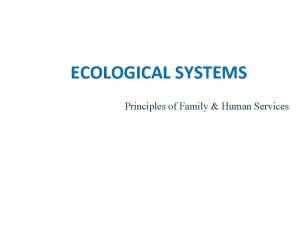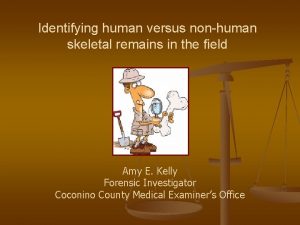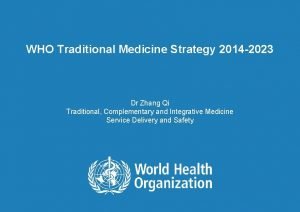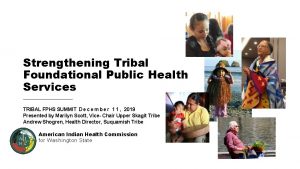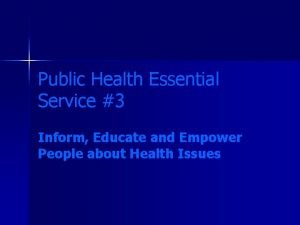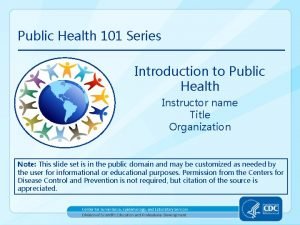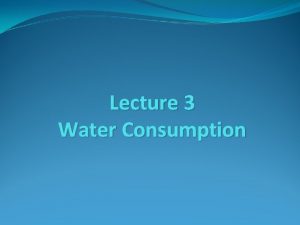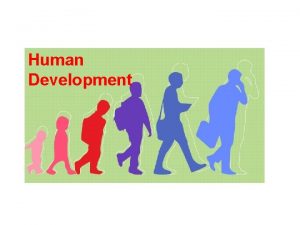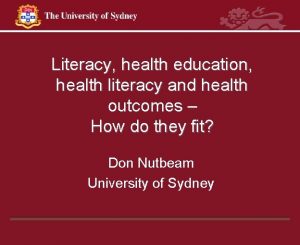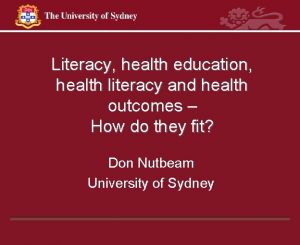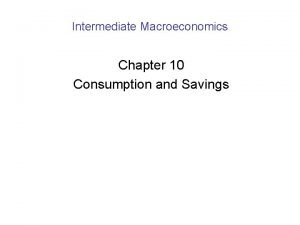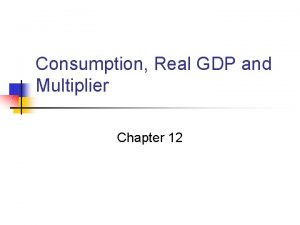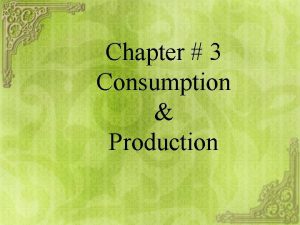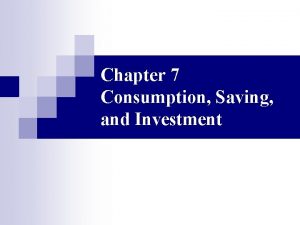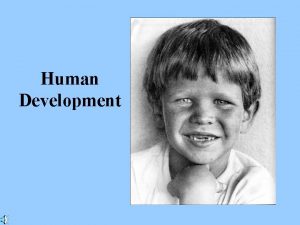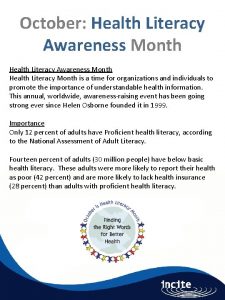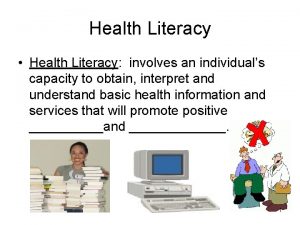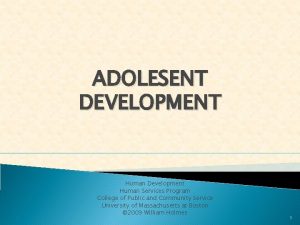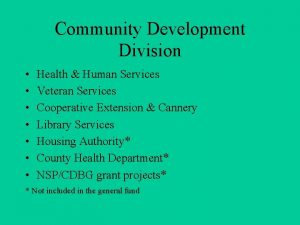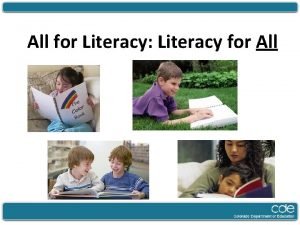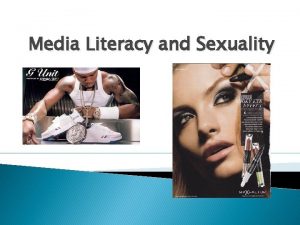Chapter 9 Development Consumption Health Literacy Services Human







































































































































- Slides: 135

Chapter 9: Development Consumption, Health, Literacy, Services

Human Development Index (HDI) A combination of four factors: 1. 2. 3. 4. Per capita Gross Domestic Product Literacy rate Amount of education Life expectancy

Human Development Index: 1994 Green: mostly MDC, some transitional Red: mostly LDC, some transitional Yellow: some transitional, some LDC (changes over time) http: //gw. eduhi. at/programm/dehmer/daten/hdi. gif

Countries: MDC vs LDC vs Transitional • MDC: More Developed Countries: – Europe, Anglo America, Japan – Demographic Stage 4, 5 • LDC: Less Developed Countries: – Africa, Most of Asia, Most of Latin America – Demographic Stage 2 • Transitional – China, Brazil, India (Maybe…) – Demographic Stage 2 3

Global Increase in HDI over time This is one global average estimate. Projected growth is a ‘best guess’. http: //www. usmef. org/speeches/02_Other/02_0916_Seng_New. Zealand. Presentation_files/slide 0147_image 021. gif

Gross Domestic Product • • http: //earthtrends. wri. org/images/maps/5_m_GDPPPP_md. gif Information: http: //earthtrends. wri. org/text/economics-business/map-186. html

MDC vs LDC vs Transitional: Job Sectors: (Figure 9 -3) • MDC: More Developed Countries: – (Greater than 2/3 tertiary sector employment) • LDC: Less Developed Countries: – (Greater than 2/3 primary sector employment) • Transitional – (Approximately equal primary, secondary, and tertiary jobs) – (In transition, so sector percentages are changing)

Gross Domestic Product (GDP): value of the total goods and services produced in a country per year. Per-capita GDP = GDP / country population • More Developed Country (MDC) • Less Developed Country (LDC) • MDC GDP ~ $20, 000 • LDC GDP ~ $1, 000

Gross Domestic Product (Total, not Per-Capita) • http: //www. lib. utexas. edu/maps/world_mktsize 96. jpg

Why Per-Capita GDP? • Individual welfare and development. • Individual Purchasing Power – Food Security – Consumption – Remember: The same money goes farther in some countries than in others.

Social indicators of development • Education and Literacy: – • Increases workforce potential Life Expectancy – – – Health & welfare, Societal stability, Population growth http: //www. hewett. norfolk. sch. uk/curric/NEWGEOG/Africa/Eth_py~1. gif http: //www. carec. org/mortality/images/p 3 -12. gif http: //www. censusscope. org/us/chart_age_graph_1. gif

Education and Literacy – Average number of school years attended: • (quantity of education) – Student-teacher ratio: • (quality of education) – Literacy rate: • percentage of a country’s population that can read and write • (quality and outcome) http: //www. cdm. ucsb. edu/images/photos/education_image 3. jpg http: //www. africa. upeace. org/africa_students 2. gif

Life Expectancy http: //www. globalgeografia. com/world/life_expectancy. gif

Human Development Index (HDI) Recap: A combination of four factors: 1. Per capita Gross Domestic Product 2. Literacy rate 3. Amount of education 4. Life expectancy All four are used together to form a better picture of development. No one factor alone is sufficient.

Alternate Development Approaches: • Self-sufficiency • International trade

Self-sufficiency: • • • Isolation of businesses from international competition Taxation, denial of access, import restrictions, etc. (barriers to trade) Problems: inefficiency, bureaucracy, graft, black market

International trade: • Expansion of distinctive products (with local competitive advantage) • Rostow’s Development Model (on quiz, test) – Traditional society – Preconditions for takeoff (elite group initiates economic activities), investment – Takeoff: limited economic activities progress – Drive to Maturity: modern technologies diffuse, rapid growth, skilled workforce – Age of mass consumption: production shifts, heavy industry to consumer goods

Why do LDCs face obstacles to development? • MDCs already have working production facilities • MDC agencies loan to LDCs for a profit, and some cash flows out of LDCs to pay of loans. • Increases in infrastructure are not often funded, and there is often a low drive to build them. • Many manufacturing processes require a highly skilled workforce, absent in many LDCs. • Local economies require local capital, local excess production, which are often minor or absent. • Previous loans (e. g. by IMF) are a burden to the country, further reducing local capital.

Recent ‘triumphs’ – India: protection (4% / year) to trade (6% / year)

International Development Alternative Problems: (p. 324) – Uneven resource distribution • Costs of imports can rise faster than export profits. – Market stagnation (and saturation) • Demand for your products may not increase. • Competition may increase, saturating the market. – Increased dependence on MDCs • for previously locally produced goods

Recent failures (other sources) • Yugoslavia • Most of Africa – (Democracy and Development in Africa, by Claude Ake, Brookings Institute) – Ex: Nigeria • South America – Argentina

International Monetary Fund (IMF) • Loans: – Infrastructure (Gamble) “If you build it they will come. ” (Really? It depends…) – If this doesn’t pan out (permanent? ) debtor nations. – Why? Market shift, excess debt, investment failed, fraud / graft, etc. • Structural Adjustment Programs: – Raise taxes, reduce government spending, control inflation, sell utilities, charge more for services – Dissatisfaction up, destabilization possible

World Trade Organization (WTO) • reduce barriers to trade: tariffs, quotas, subsidies, etc. – enforcement – problems • Benefits corporations • Reduces sovereignty • (can increase internal unrest, increasing likelihood of war, e. g. Yugoslavia)

Gender • No gender equality exists in any country in the world. (p. 315) – • The income gap is about $15, 000 / year in MDCs. Gender-Related Development Index (GDI) compares the level of development of women with that of both sexes. – • Nice info for MDCs, no data for many LDCs. Gender Empowerment Measure (GEM) compares the ability of women and men to participate in economic and political decision making. – Nice info for MDCs, no data for many LDCs.

Summary of Regional Information Place HDI Population, pre-conditions Mfg/service sector Food security Anglo-America 0. 94 Homogeneous, Christian sects Falling / increasing High, export High / high import Western Europe 0. 92 Cultural unity vs. national. I. D. Eastern Europe 0. 78 Iron Curtain difficult transition Varying ? varies Japan 0. 93 Homogeneous High-high tech / ? import South Pacific 0. 93 Australia, NZ = 90% English ? /? ? Latin America 0. 78 Post-colonial, poor soil, landless ? /? export East Asia 0. 72 China: 1949 revolution, central plan, flexibility local governors Growing, becoming the largest. Selfsufficient? Southeast Asia 0. 71 Much warfare in past Varying ? Middle East 0. 66 Harsh environ. petroleum +- Growing / growing import South Asia 0. 58 Ag. Revolution pop. growth Growing / growing ? Sub-Saharan 0. 47 Recent colonial past, climate ? /? import Source: text (See also weather, war, health stats. )

Self Sufficiency • • Internal development No foreign aid No foreign debt Slow growth

Foreign Investment • • Capital Graft Profits Cash Crops Dependency Debt Agglomeration of lands Surplus labor – Manufacturing? – Services? – Unemployed? • Core vs. Periphery:

Primary (Agriculture / Extraction) Sector • First, food survival • Remaining food and raw materials for export • High food production population generally indicates a large focus on survival/sustenance. • The majority of jobs in a LDC are in primary production. http: //www. seasite. niu. edu/Thai/slideshows/rice/images/rice 1. jpg http: //www. geographyfieldwork. com/riceterrace_small. jpg http: //www. eth. mpg. de/people/graetz/images/graetz-02. jpg

Secondary (Manufacturing) Sector • Including basic products (e. g. steel) and fabrication of consumer goods • Surplus time, energy, and products produce consumer goods. • Export: Local, regional, global http: //216. 185. 134. 103/archives/april/wed 07042004/images/current/ftf 070404. jpg http: //www. generalconstructionco. com/images/projects/Seattle%20 Steel%20 Manufacturing. jpg http: //wfc 3. gsfc. nasa. gov/MARCONI/images-fabricate/fab. jpg

Tertiary (Services) Sector • Tertiary Sector: Goods and services, retail, banking, law, education, government • MDC Increase in services, for local and/or global customers http: //www. wincornixdorf. com/internet/de/press/Picture. Library/Retail/0005 Hi, template. Id=blo b. jsp, property=Data. jpg http: //www. es. ucsb. edu/images/new/class_Sedg_pit. jpg http: //ocw. mit. edu/NR/rdonlyres/Global/C/C 29 AC 488 -4269 -45 D 0 -964 E 55 C 53 A 4 DA 7 C 8/0/chp_supreme_court_1. jpg

Sector Value Added Overview: Value added = gross value – raw material cost – energy inputs • Related to producer income – Primary: Food, raw materials: ¢ – Secondary: higher value added: $ – Tertiary: very high value added: $ to $$$

Specialization • Specialization: skilled trades small scale mfg. large scale mfg. • Specialization higher productivity • Manufacturing globalization MDC sector job loss to transitional countries with skilled labor. • Search for Competitive Advantage

Agriculture: deliberate land modification through plant cultivation and raising animals for food or profit. • Percentage of labor force MDC: 5% (avg. ), LDC: 55% • http: //www. faculty. de. gcsu. edu/~dvess/gissues/agrlabor. jpg

Subsistence Agriculture: food production primary for farm family consumption Example: slash and burn http: //upload. wikimedia. org/wikipedia/commons/6/6 b/Bakweri_cocoyam_farmer_from_Cameroon. jpg http: //en. wikipedia. org/wiki/Subsistence_farming

Commercial Agriculture: • food production primarily for sale off the farm • Can Start as subsistence farming, excess sold • Can transition to pure commercial agriculture • http: //www. internationalspecialreports. com/theamericas/00/bahamas/17 -2. gif http: //www. georgetowncranberry. com/images/skipper. jpg

Subsistence vs. Commercial Ag. Subsistence • Generally expands to marginal lands as population increases http: //geographyfieldwork. com/riceterrace_small. jpg http: //geographyfieldwork. com/Rice. Farm. htm Cash Crop Flooding, Drought, Population (Same) Lower yield No / low debt Higher yield Need inputs Higher debt Low profit Profits machinery, inputs, possible savings for lean years

Agribusiness integration of commercial agriculture into food processing, usually by corporations Image: http: //www. agribusiness-mgmt. wsu. edu/Templates/index_images/Landscape-Green_r 2_c 24_. jpg Source: http: //www. agribusiness-mgmt. wsu. edu/

Swidden Agriculture , a. k. a. slash and burn, a. k. a. shifting cultivation) • • • clear vegetation, burn the slashed vegetation, and plant in the ashes. Shift sites in 1 to a few years, when yields drop off. Requires much land recovering from past slash and burn activities.

Shifting cultivation (observations) • • Done wisely, it is ecologically sound in otherwise uncultivable soils. Increasing population density eventually makes this practice unsustainable. Is being replaced by logging, cattle ranching, more intensive cash crop cultivation. Can be the first step in forest conversion. http: //www. artsci. wustl. edu/~anthro/images/rainforest/26. JPG http: //www. artsci. wustl. edu/~anthro/images/rainforest/27. JPG

Issues for subsistence farmers: • Population growth – Forest fallow bush fallow short fallow annual cropping multi-cropping • Conversion from slash and burn to multi-crop farming may not be sustainable. (Site dependent) – New farming methods: • • Inputs: fertilizer, manure, new tools, new seeds and new crops International trade pressure: – conversion of food crops to cash crops • • may make the economy dependent on foreign foods if so, cash crop shortfalls or price drops avoidable food shortages – drug crops • forced or voluntary growth of drug crops

Intensive subsistence agriculture: Examples: wet rice cultivation, dry farming • maximize yield per acre, minimize unused land, some double cropping • low machinery inputs, high animal and human inputs • dry farming crop rotation

Pastoral nomadism works on marginal lands, if you can avoid overgrazing • • Story: http: //www. geographie. unifreiburg. de/ipg/forschung/ap 1/current_projects/chad/nomads_project%20 area. html Image: http: //www. geographie. unifreiburg. de/ipg/forschung/ap 1/current_projects/chad/harmattan%20 vaches%20 en%20 transhum ance%20 big. jpg

MDC farming: – Mixed crop and livestock farming: crops animals humans (e. g. beef, milk, eggs) • – – – crop rotation, nitrogen fixing crop intermixed with primary crop(s) Dairy farming: within range of market (avoid spoiling), refrigeration extends this range Grain farming: e. g. wheat belt Livestock ranching: often on marginal lands in the West, also Amazonia, Pampas, Outback Mediterranean agriculture: Horticulture: growing of fruits and vegetables, and flowers Commercial gardening and fruit gardening: horticulture, large scale, migrant workers Plantation farming: specialize in 1 -2 crops, once slavery, now import workers

How Do you figure out what to grow where? Von Thunen Model: Important Influences: • Land Rent • Transportation Cost • (Perishability transportation range, cost) • Likely on the quiz, test, and / or final exam.

Von Thunen Model • Distance is a function of land rent and transportation costs. • Basically, what produces the most profit at each location? • • http: //people. hofstra. edu/geotrans/eng/ch 6 en/conc 6 en/img/vonthunen. gif Info: http: //people. hofstra. edu/geotrans/eng/ch 6 en/conc 6 en/vonthunen. html

Issues for commercial farmers: • Access to market: Von Thunen model (ring/modified) – • Maximize profit. Overproduction – – – • growth of crops in demand, avoid yield surpluses price subsidies buy surplus yield, donate to foreign governments Unsustainable agriculture – move to more sustainable practices • • sensitive land management, e. g. ridge tillage limited use of chemicals (possibly organic farming)

Issues for subsistence farmers: • Population growth – Forest fallow bush fallow short fallow annual cropping multi-cropping • – Conversion from slash and burn to multi-crop farming may not be sustainable New farming methods: • • – more inputs: fertilizer, manure, new tools, more labor intensive new seeds and new crops International Trade • Food crops cash crops

Strategies for increasing food supply: Increase agricultural land, marginal lands (& waters) – require careful management for long-term yields – must worry about soil salinization, selenium, etc. • desertification: human action land deterioration, Increase land productivity – New grains (change crops) • green revolution – often requires nutrient inputs (external, cost) – often relies on machines (external, cost, needs gas) – seed stocks often foreign owned, possibly not self propagating – Trade cash crops, and buy food (if affordable)

Food supply crises Example: Africa • Population sometimes outstrips local food supply. • Over-planting removes soil nutrients. • Trees harvested for firewood. • Overgrazing removes grasses, &. • Desertification is a major problem. – • The desert is slowly marching south towards the sea. Global warming exacerbates the problem. • (What to do? Change jobs, and / or move. )

Manufacturing Beginnings: Cottage Industry • http: //www. fao. org/docrep/w 9500 e 72. jpg

Steam Engine, by James Watt Industrial Revolution • Pumped mine water • Drove machinery • Drove railroad engines • (Before, manual, by wind, or by water. ) http: //www. glasgowmuseums. com/assets/slide. Shows/Watt%20 Steam%20 Engine. jpg http: //library. thinkquest. org/04 oct/01249/imagesc/locomotive. jpg

Warfare and Politics Slowed Diffusion • French Revolution • Napoleanic Wars • German Unification http: //www. electricartists. com/frenchrev/French. Rev_7. jpg

Site: Density Higher land rent • • http: //homepage 1. nifty. com/suku/photo/tdr/2003/020 -tokyo-bay. jpg http: //www. gdrc. org/oceans/un-seahorse/images/ tokyo-bay. gif

Site: Large Labor Force Growth • http: //www. benchmarkstaffing. com/images/pics/client_img. gif

Site: Skilled labor higher productivity, profits Key to manufacturing • Literacy • Technical skills • Strong in EU, US, Russia, China, etc. • Weak in Africa, parts of Asia and S. America • http: //www. benchmarkstaffing. com/images/pics/client_img. gif

Site: Lax Laws: Child Labor more profits Then: U. S. Now: Third World • • • Information: http: //www. historyplace. com/unitedstates/childlabor/empty. jpg http: //www. kenlight. com/photos/childlabor/beads. jpg

Site: Capital and Interest Rates • Negotiable • Varies by country • Sometimes varies by region, site http: //www. norges-bank. no/english/speeches/annual-2004/charts/chart 1. gif

Situation: Bulk Reducing: Copper Reduces shipping costs. http: //mining. ubc. ca/cimarchive/Smelter/Anod. Cast/10000039. JPG, http: //www. lpl. arizona. edu/~wegryn/images/Morenci 3. JPG http: //stoner. eps. mcgill. ca/Home. Image/open_pit_copper_mine_arizona. jpg

Situation: Bulk Gaining: Locations near the customer • Reduces distribution costs tp: //www. texasescapes. com/Signs/Coca. Cola. Roswell. New. Mexico. CBarclay. Gibson

Situation: Transportation Modes • Transportation: part of services sector (Tertiary sector, next ch. ) • Picking sites with good transportation is a mfg. site decision. • Location central to customers is a mfg. situation decision. http: //www. theclydebankstory. com/images/TCSM 00108_m. jpg http: //www. speakeasy. org/~peterc/nicaragua/drycanal/containr/images/dblstac 1. jpg http: //www. airliners. nl/images/DAS_Air_Cargo_280204. jpg

Global Problems: Stagnation • Demand is flat • No market growth little incentive to enter market. • (Example grains, from agriculture, same principle works here. http: //www. fas. usda. gov/grain/circular/1999/99 -05/graint 3. gif

Global Problems: Capacity Exceeds Demand • Could be SUVs, Trucks • • Story: http: //www. potashcorp. com/investor_relations/investor_overview/industry_over view/2005/phosphate/page_19. zsp http: //www. potashcorp. com/common/images/content_images/markets/industry_overv iew/2005/graphs/S 519_New-DAP-Cap-vs-Demand. gif

Global Problems: Increased Input Costs • • Total demand increases Local production falls Foreign oil purchases, dependency Foreign oil supply and foreign policy are critical. Images: http: //www. azgs. az. gov/images/winter 0106. gif http: //www. cpast. org/Articles/Artfiles/000/014/f 14_6. gif

MDC perspectives • (Repeated Knowledge) • Trading Blocks: Example of cooperation… – Politics chapter • Internal disparities within countries and unions – Development chapter • Older, shrinking established populations, immigration – Population and Migration chapters • Transnational Corporations – Globalization of production, Intro. (Chapter 1)

LDC perspectives • Disadvantages: – – – • distance to (external) markets, inadequate infrastructure: (transportation, communications, goods, services, tools, machines) entrenched competition, inconsistent governance and laws, government instability, low literacy Advantages: – – – low labor costs, local raw materials (if any) fewer legal restrictions, (e. g. easier to pollute)

Services: Key Definitions Service: • Any activity that fulfills a human want or need and returns money to those who provide it. Settlement • A permanent collection of buildings where people reside, work, and obtain services. (<1% of world)

Service Types: • Retail Services: – • Personal Services: – • banks, insurance, real estate, financial, law, engineering, wholesale Transportation and Information Services, – • services for the well being and personal improvement of individual consumers. Producer Services: – • sales to individual consumers Railroads, trucking, phone, airlines, UPS, cable Public Services – – provide security and protection for citizens and businesses (Includes teaching)

Central Place Theory • (important!) – On test.

Threshold and Range • Threshold: minimum population required to survive. • Range: maximum distance people travel for a service. http: //teacherweb. ftl. pinecrest. edu/snyderd/APHG/Unit%206/urbannotes_files/image 002. jpg

Increasing Competition A: Less competition: circles B: More competition: overlapping service ranges C: Select the closest store lines service boundaries This produces hexagons. http: //www. csiss. org/learning_resources/content/g 5/materials/G 5 _Image_Library/de_Blij_figures/IMAGE_56. JPG

Hexagon: Basic shape • Highly competitive market: all areas are served. • Equal services: Go to the closest service. • Boundaries form the lines of a hexagon. • http: //www. uwec. edu/Geography/Ivogeler/w 111/circle 4. gif

Central Place Theory: Pattern • Stores requiring a larger market threshold must serve more than one settlement to survive. These stores serve a market area encompassing neighboring settlements within their range. If the range encompasses one neighboring settlement, it encompasses all six.

Hexagons on Hexagons: • http: //wwwpersonal. umich. edu/~sarhaus/courses/NR E 501_W 1999/501 w/cptk 7. jpg

Central Place Theory: Pattern • This results in hexagons containing 7 settlements. The central settlements contain these (larger market threshold and range) stores serving more communities are larger, and are also known as more central places. (This gives the name to theory. ) Stores with still larger thresholds and ranges encompass clusters of these larger communities, and are located at cluster centers.

Central Place Theory Result of pattern – Migration • • • – Jobs, Services, Convenience Concentration and mixture of cultures, development of subcultures • • Faster dispersion of new ideas, activities, things. Cultural change

Rank Size: • Small Towns: serve local region, with small range stores that contain the population threshold. – • Los Alamos: often, small store, gas, motel Medium Towns: Sell to small towns within a larger local region or service area. – • Buellton: supermarkets, auto sales, strip mall/CBD Small Cities: Serve medium towns within an even larger region. – • Santa Maria: Wal-mart/K-Mart/Cosco, Community College Larger Cities: Market to small cities within an increasing, larger service area – Santa Barbara: University, wide range of services

Largest City Comparisons: • Rank Size Rule: (pattern) The nth city has approximately 1/n * the population of the largest city. – When the rank size rule does not work for the second city, the first city is extremely dominant. • Primate City Rule: (pattern) The largest city in a region has more than twice the population of the second largest city. One OR the other, not both!

Cities: History – Ancient cities: ex: Ur, Athens, Rome (wall, temples, market area, housing, road network) – City states: independent self-governing communities that included a nearby countryside – Medieval cities: ex: Paris, London (often charters of rights, more personal freedom/less serfdom) – Modern World Cities: ex: NYC/Tokyo/London (global reach/service area, e. g. finance, influence)

Central Place Theory: Review • • Threshold Range Distance Overlap Hexagons Beehive Higher order places with more services – Bigger service areas (e. g. hexagons)

Urban Center Definitions • Urbanization: increase in the number and percentage of people living un urban settlements. • Urbanized area: (U. S. ) central city plus contiguous suburbs, population density more than 1000 people / square mile. • City: urban settlement that has been legally incorporated into an independent, selfgoverning unit. • Central city: city surrounded by suburbs

Where have urban areas grown? • 3% urban in 1800, • now 50%+ and growing • Change in extent, density, heterogeneity • MDCs: – Ag. Mfg. Services, – Urbanization is effectively completed. – London, Tokyo, New York City, Los Angeles • LDCs: – migration from country in search of jobs, – population growth often outstrips job availability. – Delhi, Jakarta, Mexico City, Mumbai (Bombay),

Models of urban structure • Concentric Zone: (Concentric rings) CBD, transition zone, independent worker houses, better houses, commuter zone. • Sector: (Wedges) initial land use patterns expand in wedges from the center. • Multiple Nuclei: Initial nuclei form around basic activities, and land uses are attracted to those nuclei of development. – Nuclei: CBC, harbor, university, airport, park, railroad yards, manufacturing, military bases, etc.

Peripheral Model • urban area with inner city and suburbs connected by a ring road • suburbs become edge cities. • Examples: Washington DC • Los Angeles CA

SJ Map • • • Colonial city Concentric Circles Sectors (Wedges) Nuclei Peripheral Cities

Inner cities: distinctive problems • Deterioration (housing & services): – Housing ages. – Rent < maintenance skip it. – Rent < bills, etc abandon / raze / sell • Urban renewal (& public housing): – Demolition of old housing dislocates people, – High rises provide poor environments. • Renovation ( & gentrification): – Pay for renewal, – gentrification dislocates lower classes, usually affecting ethnicities.

Land use influences • Filtering: (a housing use/reuse pattern): Large houses subdivided, age, occupied by successive immigrant waves. • Red-Lining: (illegal denial of credit): drawing lines on a map to identify areas in which loans will not be given. • Public housing: units reserved for low income households, who pay reduced rates (e. g. 30% of their income) for rent.

Underclass: • (inner city text reference, only there? ) • peoples trapped in an unending cycle of economic and social problems. • Why?

Culture of poverty: • Single Parents: – 2/3 of children by unwed mothers, 90% one parent, inadequate child care, deadbeat dads • Poor Education: – Lack of motivation, less parental support, school drug use, etc. low academic success • High Crime Rate: – drug use, gang violence over drug turf, more visible drug distribution than in suburbs • Segregation: – (chain migration), separation in poor regions by recent immigrants, lower classes, some ethnicities • Economics: – insufficient local taxation poorer services, (schools, parks, transit, refuse, libraries, etc. )

Partial Solutions: • Renovation – Problems – Benefits • Annexation – Problems – Benefits – (who wins, who loses? )

Suburbs • The great American Dream – House – Yard – Garage – Shopping – Satellite work (Services and Industry)

Edge cities • Were residences, – Established malls, – Then manufacturing centers, • Often developed around nuclei of attraction. • Alternate explanation – (extension of central place theory) – original communities grow with increasing pop. density.

Density gradient • Change in density with distance d(Population/Area)/d(Area) • Once high, with CBD and nearby regions densely populated. • Decay and urban blight suburban flight, smaller cities

Suburban Segregation • Upper & middle class housing, separated, zone no apartments, min. acreage (more sale profit) • Jobs are often suburban, but the poor workforce is often urban. Need a transportation match for increased employment.

Suburban Sprawl • Progressive spread of development over the landscape. (Why? ) – Home ownership, lifestyle, Fed. auto subsidies, & • Costs: – Inefficient costly development, less farmland, less truck farming, patchwork development, higher utility costs, &. • Effects: – Increased dependence on transportation. – If inadequate, means, then less travel. – Lower class isolation.

Transportation • • • Loss of rail transit, partial recovery, 90% interstate automobile subsidies, ¼ of land transit and parking, congested Public transport: – Cheaper, less polluting, more energy efficient. Separate rail services avoid delays of rush hour. – Under-funded in the US compared to the EU. – Arguably cheaper than building more roads. • Less pollution (tie in to Resource chapter)

Government fragmentation: • Services in an urban area often cross multiple boundaries, – e. g. transit, water, e-, schools. • Costs are higher, when handled separately, and confusion abounds. – Some cities cooperate, forming metro. governments.

Inter-governmental cooperation • Metropolitan Governments: – coordination of service provision – Councils of Government: • cooperative agency with local government reps, often used for overall planning. – Federations: • two tiered structure, federal control over taxation, assessment, and borrowing, local service responsibility – Consolidations: • City and county governments work together, sometimes formally separate, sometimes unified.

Smart Growth: • (Planning concept) • Legislation and regulation limiting suburban sprawl and preserving (open space, e. g. ) farmland • Encourages – Compact development, – Infill – possibly greenbelts – limits annexation – (other means and outcomes)

Questions? • (Pause, query, wait…)

(Time permitting) Tie back to: • • Population Migration Cultures Ethnicities Manufacturing Services Language Site and Situation

Tie back: Migration • Urban to suburban for quality of life, usually middle to upper middle class. • Near CBD: If poor transportation or high costs, migrate closer to work, prices permitting • Chain Migration ethnicity concentrations

Census definition • Metropolitan Statistical Area (MSA): (US Census) area of city with 50, 000 people or more, including the county, and adjacent counties with 25 people per square mile, and 50% urban populations.

Resources : • Energy – Petroleum – Natural Gas – Coal – Nuclear • Minerals – Ferrous: Iron, et. al. – Non-Ferrous: Many more. • Crucial to the world as we know it today.

Pollution: • Pollution occurs when more waste products are generated than a resource (local system) can accommodate. – Natural • Volcanoes, Floods, etc. – Human • • • Manufacturing Transportation Consumption Discarded products Waste Products

Byproducts: Liquid Pollution • • Agricultural Manufacturing Services Sewage http: //www. motherjones. com/news/feat urex/2006/03/runoff_265 x 347. jpg

Byproducts: Solid Pollution • Also, garbage ‘juice’… Our dump is west, off US 101. • http: //www. pools-hottubs. com/Dump%201. JPG

Mountain Topping: Appalachia • Also, locally, especially in deserts… • http: //www. pbs. org/independentlens/razingappalachia/images/home_left. jpg

Land Water Pollution: Tailings: • Leavings of the mine • Unwanted byproduct Tailings produce: • Dust • Contaminated runoff http: //www. robinsonforest. org/mining/strip_mine_runoff. jpg

Harder Sites: Offshore Oil, and Slicks • Background: – Oil platform • Foreground: – Oil Slick • Site: – Santa Barbara Channel – GOO (Get Oil Out) http: //www. countyofsb. org/energy/images/1969 Blowout. jpg http: //images. google. com/imgres? imgurl=http: //www. countyofsb. org/energy/images/19 69 Blowout. jpg&imgrefurl=http: //www. countyofsb. org/energy/information/1969 blowout. a sp&h=374&w=255&sz=23&hl=en&start=13&tbnid=ubc. Ku 3 h. GTJKE 2 M: &tbnh=122&tbn w=83&prev=/images%3 Fq%3 Doil%2 Bplatform%26 svnum%3 D 10%26 hl%3 Den%26 lr %3 D%26 safe%3 Doff%26 client%3 Dfirefox-a%26 rls%3 Dorg. mozilla: en. US: official_s%26 sa%3 DG (Text)

US Petroleum Supply, Energy Use: • • Total demand increases Local production falls Foreign oil purchases & dependency increase. Foreign oil supply economic & foreign policy. Images: http: //www. azgs. az. gov/images/winter 0106. gif http: //www. cpast. org/Articles/Artfiles/000/014/f 14_6. gif

Resource Supply: Oil • Increased demand • Established supplies dwindle – OPEC peak at 2015 shown here… Estimates vary. • New supplies take more work to extract higher prices http: //www. kkrva. se/images/energi/priddle 2. jpg

Oil Reserves: Start with proven reserves. Hope for rest… Note location and regional (in)stability. Unconventional: (likely) tar sands, oil shale, pressurized (additive) pumping, deeper drilling, deep water drilling, re-tapping old fields, rock fracturing, etc. http: //www. radford. edu/~wkovarik/oil/proved. versus 2. gif http: //images. google. com/imgres? imgurl=http: //www. radford. edu/~wkovarik/oil/proved. versus 2. gif&imgrefurl=http: //www. radford. edu/~wkovarik/oil/index 2. html&h =404&w=550&sz=21&hl=en&start=2&tbnid=q 41 euh. Ct. AOLme. M: &tbnh=98&tbnw=133&prev=/images%3 Fq%3 Dproven%2 Boil%2 Bsupply%2 Bworld%26 svnum% 3 D 10%26 hl%3 Den%26 lr%3 D%26 safe%3 Doff%26 client%3 Dfirefox-a%26 rls%3 Dorg. mozilla: en-US: official_s%26 sa%3 DG

Return to Users: Compare MDC and LDC consumption: MDCs • 20% of population uses 80% of resources. • 0. 2 * R 1 = 0. 8 • R 1 = 0. 8 / 0. 2 = 4 LDCs • 80% of population uses 20% of resources. • 0. 8 * R 2 = 0. 2 • R 2 = 0. 2 / 0. 8 = 0. 25

Difference in consumption: • Try a ratio: • R 1 / R 2 = 4 / 0. 25 • R 1 / R 2 = 16 • If still true, the First World (MDCs) uses 16 times the amount of resources per capita as the rest of the world. • (Amazing!)

What if LDCs consumed like MDCs? • Old total consumption: • 0. 2 + 0. 8 = 1 (US) + (Everyone Else) = 1 • (20% * 4) + (80% *. 25) = 1 • Fully industrialized total consumption: • 100% * 4 = 4 • (Uh-oh!) • (Don’t forget population though…)

Population Growth: UN medium estimate http: //www. uwsp. edu/business/economicswisconsin/e_lecture/pop_sum. htm

Local, Regional, Global Effects Sources: • Transportation • Energy consumption • Manufacturing http: //www. torontoenvironment. org/image/view/154 http: //www. wnbiodiesel. com/smog. jpg

Pollution: Air / Thermal • Local: – – Smog, Surface Ozone, (respiratory, &) Inversions, Heat Islands • Regional: – Smog, – Acid Rain, – Changes in rainfall patterns • Global: – Warming • Greenhouse Gases – Ozone Hole • CFCs, etc. destroy stratospheric ozone, increase cancer, mutation, & http: //www. battelle. org/environment/images/air 1. jpg

Smog: combustion engines, industry • http: //users. rcn. com/jkimball. ma. ultranet/Biology. Pages/P/photochemical_smog. gif

Local Regional: Smog in China http: //www. osei. noaa. gov/Events/Unique/Smog/2004/UNIchina 008_MO. jpg • http: //www. osei. noaa. gov/Events/Unique/Smog/2004/UNIchina 008_MO. jpg

Enhanced Greenhouse Effect • http: //www. environment. sa. gov. au/sustainability/images/greenhouse_effect. jpg

Enhanced Greenhouse Effect • The greenhouse effect is natural. Gases absorb and re-radiate a lot of energy. – CO 2, CH 4, H 2 O • The enhanced greenhouse effect is the human contribution to those greenhouse gases. • The enhanced greenhouse effect is caused in large part by fossil fuel use. • There are other contributions, such as: – Cow flatulence, – Rice patties

Global Warming: Notable • Abnormal • http: //www. grinningplanet. com/2004/01 -27/global-warming-1000 -v 2. gif

Causes: Identifiable sources Ex: Consistent Annual CO 2 rise http: //www. uigi. com/mauna_loa_co 2. GIF

Problem: Estimable: Gases energy storage in the atmosphere. • http: //www. research. noaa. gov/clim ate/images/observing 3. gif

Present Effects: Predictable • We can model aspects of global warming. . • Models are incomplete, (always will be), but sufficient for prediction. http: //www. ucar. edu/research/climate/images/pcmensembles. jpg

The problem is avoidable. • • http: //www. lib. utah. edu/gould/1998/Figure_9. gif Source info: http: //www. lib. utah. edu/gould/1998/lecture 98. html

That was the good news… Now for the bad news… • Long-term consequences of this initial change are difficult to calculate. • There are positive and negative feedbacks that complicate the long-term results, including: – Economics – Population Growth – LDC MDC transitions – Future use of coal, especially lower grade coal.

Effects are notable. Rate of change is uncertain. • • Glacial retreat (mountain and continental) Sea level rise Stronger storms More extreme events Hotter summers More droughts Stronger winter cold weather events – Heat engine: more heat more circulation.

Sea Level Rise • • Image: http: //membrane. com/sidd/topexjason 2004. jpg Text: http: //membrane. com/sidd/sealevel. html

Consequences are expected, but not schedulable. • Example: • Sea level rise: – 2, 4, 8 meters • 7 meter – Greenland Ice Cap – Note: Miami, New Orleans http: //www. gfdl. noaa. gov/~tk/climate_dynamics/fig 5. gif

England, India and Bangladesh: 7 -8 m rise • Hits low-lying cities in England, e. g. London, Norwich • Bangladesh is mostly under water in this scenario. • Scenarios approximate Greenland melting… http: //www. fao. org/sd/SDimages/EIre 0045. GIF http: //www. fao. org/sd/EIdirect/EIre 0045. htm http: //www. benfieldhrc. org/climate_change/sea_level_rise/UK 7 m. rise. jpg

When do we run out? What do we do? http: //www. hdg-online. net/data/comp_images/1248/0202_29_tab 1_e. jpg Assumptions are used in each model: • Proven Reserves, • Potential Reserves, • Reasonable production costs, & Note: This estimate assumes no coal, nuclear by 2050, but both are now major contributions. • Is this the ‘best’ mix? • What is ‘best’? Why? • Who picks? How?

You can live well and consume 1/2 as much. . . • • http: //www. lib. utah. edu/gould/1998/Figure_9. gif Source info: http: //www. lib. utah. edu/gould/1998/lecture 98. html

Reducing Impacts • • • Recycle reusable resources. Reduce consumption. Reuse components until they die. Refuse to use high-polluting products. Research less polluting methods. Replace present polluting methods with better methods. Merry Christmas! (Happy Consumption Festival!)
 Chapter 8 human needs and human development
Chapter 8 human needs and human development Chapter 8 human needs and human development
Chapter 8 human needs and human development A small, hard, dry seed harvested for human consumption.
A small, hard, dry seed harvested for human consumption. Media literacy venn diagram
Media literacy venn diagram Venn diagram media and information literacy
Venn diagram media and information literacy People as media and people in media difference
People as media and people in media difference Cyber literacy for the digital age
Cyber literacy for the digital age Wake county human services community services center
Wake county human services community services center Dhhs
Dhhs Iowa department of health and human services
Iowa department of health and human services Siskiyou county ihss
Siskiyou county ihss Milwaukee county department of health and human services
Milwaukee county department of health and human services Maine department of health and human services
Maine department of health and human services Barnstable county health and human services
Barnstable county health and human services Human development index definition ap human geography
Human development index definition ap human geography Human capital education and health in economic development
Human capital education and health in economic development Health and human development unit 4 aos 2
Health and human development unit 4 aos 2 Vcaa hhd
Vcaa hhd Stages of literacy development
Stages of literacy development 5 stages of reading development
5 stages of reading development Salmedrol
Salmedrol Health literacy definition
Health literacy definition Health literacy umbrella
Health literacy umbrella Signs of low health literacy
Signs of low health literacy Experts think that poor health literacy influences
Experts think that poor health literacy influences European health literacy survey
European health literacy survey Health literacy in the us
Health literacy in the us Health literacy
Health literacy Digital health literacy
Digital health literacy Health literacy innovations
Health literacy innovations Chapter 5 diversity and human needs and development
Chapter 5 diversity and human needs and development Chapter 36 section 1 reproductive systems
Chapter 36 section 1 reproductive systems Infancy psychosocial development
Infancy psychosocial development The human body in health and disease chapter 2 answer key
The human body in health and disease chapter 2 answer key The human body in health and disease chapter 2 answer key
The human body in health and disease chapter 2 answer key Adenomalacia is the abnormal hardening of a gland.
Adenomalacia is the abnormal hardening of a gland. Chapter 3 health wellness and health disparities
Chapter 3 health wellness and health disparities Chapter 1 lesson 2 what affects your health
Chapter 1 lesson 2 what affects your health Chapter 1 understanding health and wellness
Chapter 1 understanding health and wellness World tea consumption
World tea consumption Server power consumption
Server power consumption Tea consumption in canada
Tea consumption in canada Drinking fountain
Drinking fountain Carbohydrates effects of deficiency
Carbohydrates effects of deficiency Tax multiplier
Tax multiplier Mean effective pressure formula
Mean effective pressure formula Keynesian consumption function
Keynesian consumption function Consumption function formula
Consumption function formula Fuel consumption rate
Fuel consumption rate What does food preparation mean
What does food preparation mean Consumption expenditures formula
Consumption expenditures formula Ethics of food production and consumption
Ethics of food production and consumption Mri energy consumption
Mri energy consumption Food consumption score interpretation
Food consumption score interpretation Autonomous consumption
Autonomous consumption Sacred and profane consumption examples
Sacred and profane consumption examples Fixated consumption behavior
Fixated consumption behavior Consumption situation
Consumption situation Consumption bundles
Consumption bundles Keynesian consumption function
Keynesian consumption function Consumption function formula
Consumption function formula Pluralization of consumption
Pluralization of consumption Merit goods vs public goods
Merit goods vs public goods Polysynchronous classroom
Polysynchronous classroom Compliant aggressive and detached personality
Compliant aggressive and detached personality Dell flex on demand
Dell flex on demand Sacred and profane consumption
Sacred and profane consumption Keynes psychological law of consumption
Keynes psychological law of consumption Fanin and fanout in vlsi
Fanin and fanout in vlsi Theory of atomic absorption spectroscopy
Theory of atomic absorption spectroscopy The life-cycle model of consumption and saving
The life-cycle model of consumption and saving Non income determinants of consumption and saving
Non income determinants of consumption and saving Nexus 5548 price
Nexus 5548 price Subcultures of consumption
Subcultures of consumption Subculture of consumption examples
Subculture of consumption examples Rationalization of water consumption
Rationalization of water consumption How exercise affect alcohol consumption
How exercise affect alcohol consumption Dr sait uysal
Dr sait uysal Gdp formula
Gdp formula Difference between investment and consumption
Difference between investment and consumption Consumption diary example
Consumption diary example Consumption choice set
Consumption choice set Exercise may alcohol consumption
Exercise may alcohol consumption Consumer behavior in a service context
Consumer behavior in a service context Teenage alcohol consumption
Teenage alcohol consumption Pyramid of consumer behaviour
Pyramid of consumer behaviour Milk consumption and height
Milk consumption and height Meat consumption
Meat consumption How to calculate gross fixed capital formation
How to calculate gross fixed capital formation Cisco ucs power consumption
Cisco ucs power consumption Personality traits in consumer behaviour
Personality traits in consumer behaviour Consumption in science
Consumption in science Kobe rice famous
Kobe rice famous Daily cigarette consumption
Daily cigarette consumption Consumption in science
Consumption in science Consumption in science
Consumption in science Intermediate consumption
Intermediate consumption Essential consumption
Essential consumption Dynamic resolution scale
Dynamic resolution scale Consumption in science
Consumption in science Fuel consumption
Fuel consumption Sustainable clothing consumption
Sustainable clothing consumption Openfoodtox
Openfoodtox Fuel consumption
Fuel consumption Hpe green lake
Hpe green lake Alcohol consumption causes blood vessels to contract
Alcohol consumption causes blood vessels to contract History of milk consumption
History of milk consumption Financial literacy basics chapter 1 answers
Financial literacy basics chapter 1 answers Integrated services vs differentiated services
Integrated services vs differentiated services Anna y reed
Anna y reed Western washington university human services
Western washington university human services Wood county human services
Wood county human services Cultural diversity a primer for the human services
Cultural diversity a primer for the human services Anna y reed and eli weaver
Anna y reed and eli weaver Seattle human services department
Seattle human services department Diversified human services
Diversified human services Illinois department of human services
Illinois department of human services Delaware county human services
Delaware county human services An introduction to human services policy and practice
An introduction to human services policy and practice Multicausality in human services
Multicausality in human services Eli weaver human services
Eli weaver human services Entrepreneurial opportunity in human services
Entrepreneurial opportunity in human services Exosystem
Exosystem Human vs non human bones
Human vs non human bones Human and non human nouns
Human and non human nouns Electron web development services
Electron web development services City of tampa development services
City of tampa development services Ministry of community development and social services
Ministry of community development and social services City of portland bureau of development services
City of portland bureau of development services Integrated people-centred health services
Integrated people-centred health services Foundational public health services
Foundational public health services School health programme
School health programme Core functions and essential services of public health
Core functions and essential services of public health Public health 101
Public health 101 Ohsu health plan
Ohsu health plan Different between health education and health promotion
Different between health education and health promotion









